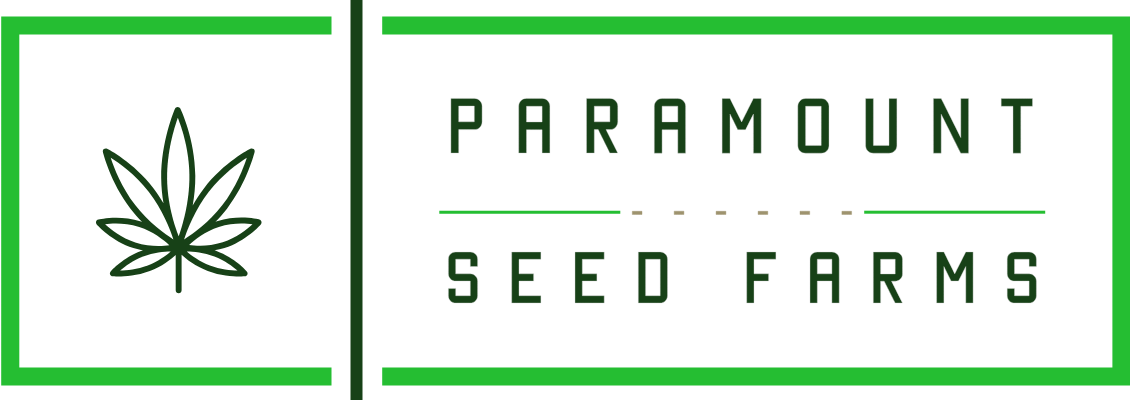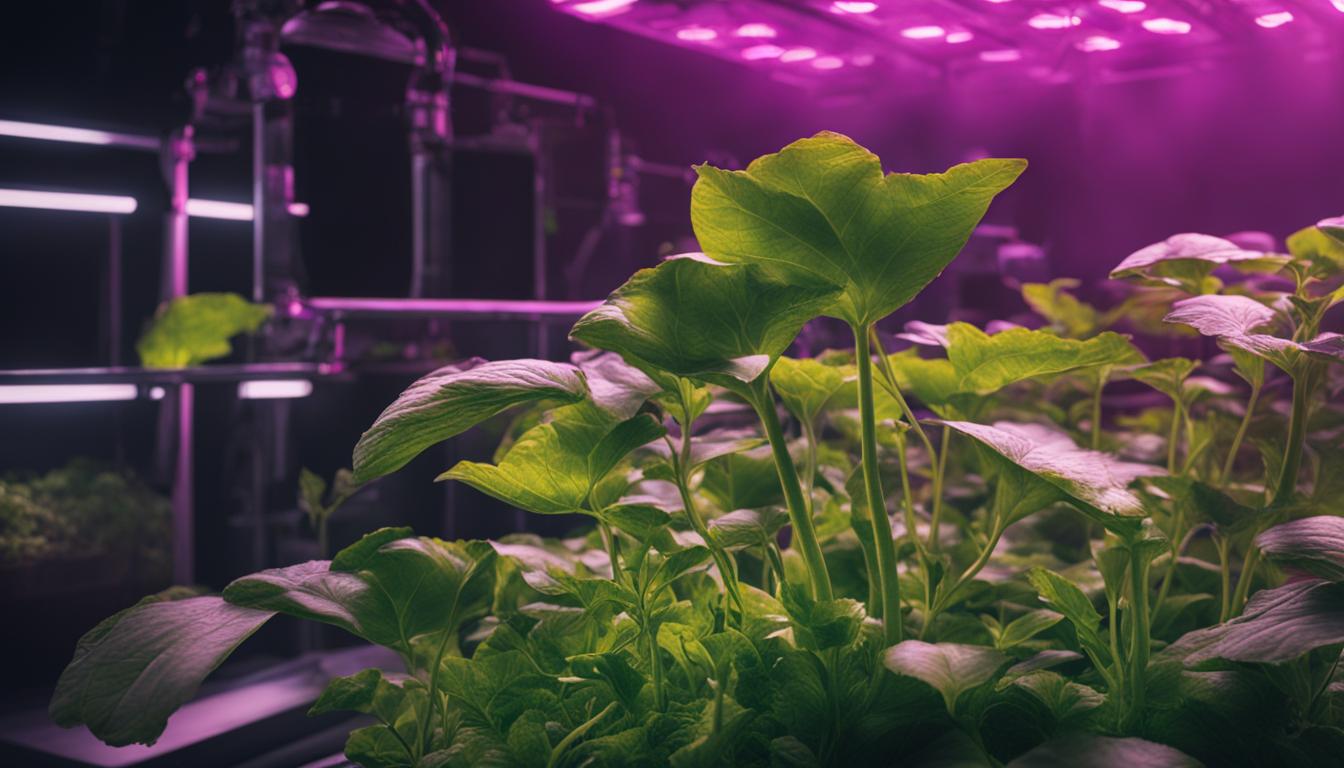Vapor Pressure Deficit, or VPD, is a crucial factor in hydroponic plant growth. By understanding VPD and learning how to calculate it, growers can optimize their hydroponic systems to achieve maximum growth potential. In this section, we will explore the importance of VPD in hydroponics and how to calculate it accurately.
Key Takeaways:
- VPD, or Vapor Pressure Deficit, is a measure of the air’s ability to accept moisture in hydroponic systems.
- Understanding and controlling VPD can optimize plant growth by affecting stomata opening, CO2 uptake, transpiration, and nutrient uptake.
- Calculating VPD involves measuring temperature, humidity, and using specific formulas or visual guides like VPD charts.
- VPD requirements vary across different stages of plant growth, and it is essential to understand the ideal VPD range for each stage.
- VPD at night is also crucial for maintaining optimal plant health, and different VPD ranges are recommended for different growth stages.
The Importance of VPD in Hydroponics
Vapor Pressure Deficit (VPD) is a crucial factor in hydroponic plant growth, and maintaining the ideal VPD range offers numerous benefits. By optimizing VPD, growers can ensure that their plants are in an environment conducive to healthy growth and maximum productivity.
One of the key effects of VPD is its impact on stomata opening. Stomata are tiny openings on the surface of leaves that allow for gas exchange, including the uptake of carbon dioxide (CO2) needed for photosynthesis. When VPD is maintained at the ideal level, stomata can open wider, facilitating better CO2 uptake and ultimately enhancing plant growth.
Additionally, VPD affects transpiration, which is the process by which plants release moisture through their leaves. By controlling VPD, growers can regulate the rate of transpiration, ensuring that plants do not experience excessive water loss or become overly stressed. Furthermore, VPD influences the rate of nutrient uptake in plants, as it affects the movement of water and nutrients from the roots to the rest of the plant. By maintaining the ideal VPD range, growers can optimize nutrient absorption and prevent nutrient deficiencies.
PuroAir 240 Air Purifier
- Top selling air purifier on Amazon
- Cleans 1,115 square feet automatically
- Most powerful HEPA filter available
- Quietest purifier we tested
- Filters allergy-causing pet dander, dust, smoke, pollen and odors
- Includes filter and 2 year warranty
Medify MA-25 Air Purifier with True HEPA H13 Filter
- Efficiently cleans spaces up to 825 sq ft in one hour
- TRUE HEPA H13 FILTRATION
- 3 fan speeds, with the lowest setting operating virtually silent
- Touch panel with 0-8 hour timer, fan speed, sleep mode, filter replacement indicator, and child lock,
- Backed by a USA registered Lifetime Warranty. The replacement filter (B084Q965BF) lasts 2,500 hours or about 3-4 months. CARB, ETL, and Energy Star certified.
Medify MA-22 Air Purifier with True HEPA H13 Filter
- Efficiently cleans spaces up to 555 sq ft in one hour
- TRUE HEPA H13 FILTRATION
- 3 fan speeds, with the lowest setting operating virtually silent
- Touch panel with 0-8 hour timer, fan speed, sleep mode, filter replacement indicator, and child lock, great for both kids and pets
- Backed by a USA registered Lifetime Warranty
MORENTO Smart Home Air Purifier
- 4-in-1 all-around purification, and it effectively cleans the air in the room of 2,050 Ft²
- MORENTO air purifier's PM2.5 sensor to control indoor air quality
- The sleek handheld design makes it easy to move around
- Smart home air purifier with Wifi function
- The HEPA Home Air Purifier utilizes a four-layer filtration system that is twice as effective as traditional filters
- The pet air purifier has a safety lock that avoids accidental button presses
- This air purifiers for home large room is ETL, DOE, ENERGY STAR, EPA and FCC certified and meets the requirements of the California Air Resources Board (CARB), it is a home pet air purifier you can use with confidence
MIKO Air Purifier For Home HEPA
- Multiple fan speeds, built-in timer, maximum surface area for air flow, all around suction, replacement filter indicator and essential oil port
- Large filtration components allow for a more thorough and well rounded purifying process throughout your room
- Oscillating Intake process collects all particles in a tornado motion which helps maximize efficiency while distributing fresh air
- Essential oil amplifier, easy touch control panel, and modern design will replace unhealthy particles with clean and fresh air in any room
- Lifetime support and full 1 year warranty, ETL, CARB, EPA, UL and ROHS certificated, CADR of 150m3/h, Range of 400 ft2, 25db to 46db, just 25w of power.
The Impact of VPD on Plant Stress and Growth
Controlling VPD in hydroponics is essential to minimize plant stress and promote optimal growth. When VPD is too high, meaning that the air is dry and unable to accept more moisture, plants may experience excessive transpiration, leading to wilting and nutrient imbalances. On the other hand, when VPD is too low, indicating that the air is saturated with moisture, plant growth can be hindered due to reduced CO2 uptake and nutrient absorption.
By maintaining the ideal VPD range, growers can create an environment that optimizes plant functions, allowing for efficient photosynthesis, transpiration, and nutrient uptake. This can lead to healthier, more robust plants with increased yield potential. Additionally, by closely monitoring and controlling VPD, growers can identify and address any imbalances or fluctuations that may occur, ensuring consistent and controlled growth throughout the hydroponic system.
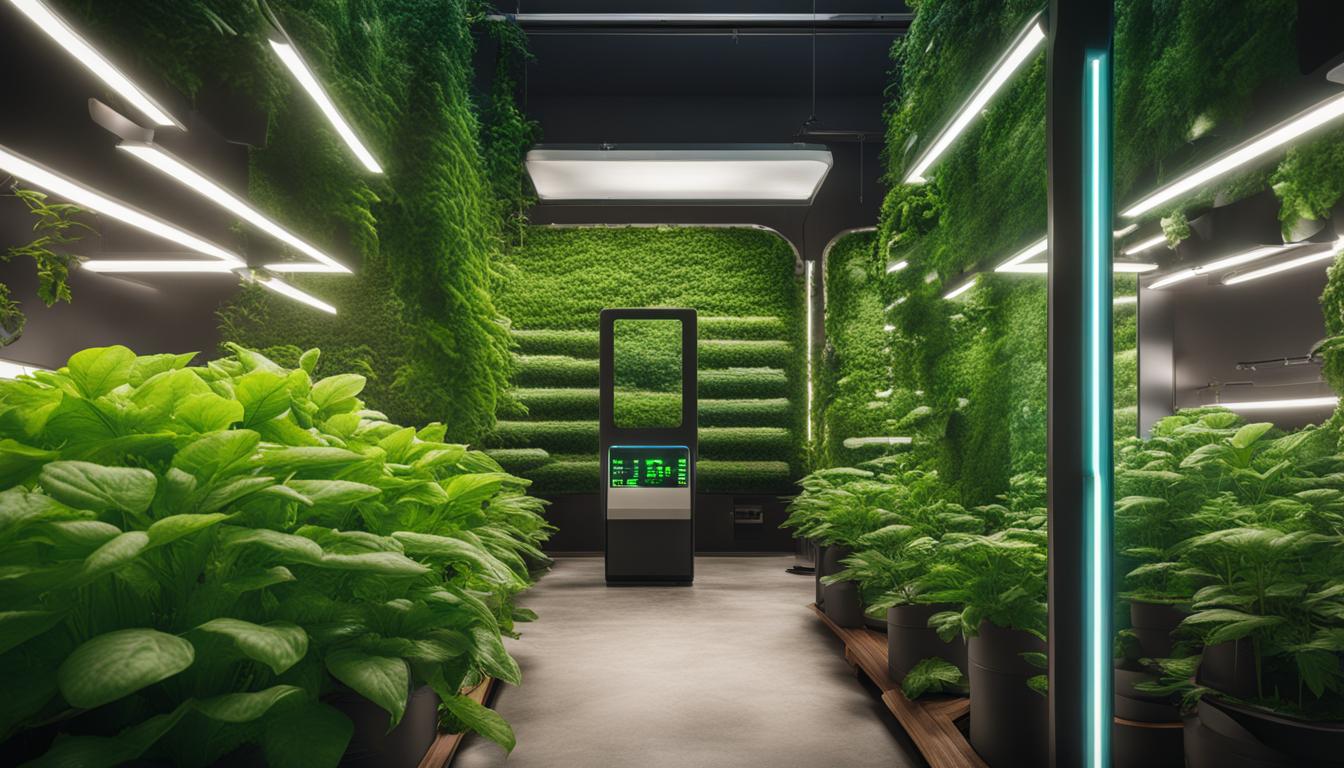
How to Calculate VPD in Hydroponics
Calculating VPD in hydroponics is essential for maintaining the optimal growing environment for plants. By understanding the relationship between temperature, humidity, and VPD, growers can ensure that their plants receive the right conditions for healthy growth.
To calculate VPD, you will need to measure the temperature and relative humidity in your hydroponic system. Once you have these values, you can use a VPD chart or a VPD calculator to determine the appropriate VPD range for your plants at each stage of growth. The VPD chart provides a visual guide, while the calculator allows for more precise calculations.
Here is an example of a VPD chart for hydroponics:
| Temperature (°C) | Relative Humidity (%) | VPD (kPa) |
|---|---|---|
| 25 | 50 | 1.2 |
| 28 | 60 | 1.6 |
| 30 | 70 | 1.9 |
Note: The values in the table are for illustrative purposes only and may vary depending on the specific plant species and growth stage.
By using the VPD chart or calculator, growers can make adjustments to temperature and humidity levels to ensure that the VPD remains within the ideal range. This optimization can lead to improved plant health, increased nutrient uptake, and ultimately higher yields in hydroponic systems.
Factors Affecting VPD in Hydroponics
Several factors can affect VPD in hydroponics, including the type of growing medium, ventilation, and lighting. Each of these factors plays a role in maintaining the optimal VPD range for plant growth.
Growing medium: Different growing mediums have different water-holding capacities, which can affect the moisture content in the air surrounding the plant roots. This, in turn, can impact VPD.
Ventilation: Proper ventilation helps maintain the optimal VPD range by ensuring adequate air exchange and preventing excessive moisture buildup. It also helps control temperature and humidity levels, which are crucial for VPD calculations.
Lighting: The type and intensity of lighting used in hydroponics can influence the temperature and humidity levels in the growing environment. It’s important to consider lighting when calculating VPD to ensure accurate measurements.
VPD in Different Stages of Growth
Understanding the ideal Vapor Pressure Deficit (VPD) for different stages of growth is essential for optimizing hydroponic systems and maximizing plant growth. VPD requirements vary depending on whether the plants are in the seedling and clone stage, the vegetative stage, or the flowering stage.
During the seedling and clone stage, maintaining the ideal VPD range is crucial for healthy root development and overall plant establishment. The recommended VPD range for seedlings and clones is typically between 0.4-0.8 kPa. This range helps minimize water stress and ensures efficient nutrient uptake.
In the vegetative stage, plants are actively growing and developing foliage. The ideal VPD range for this stage is slightly higher than that of seedlings and clones, typically between 0.8-1.2 kPa. This range promotes strong leaf growth, photosynthesis, and overall plant vigor.
As plants enter the flowering stage, their VPD requirements change again. The ideal VPD range during flowering is usually slightly lower, ranging from 0.6-1.0 kPa. This range helps maintain optimal conditions for flower development, resin production, and overall plant health.
| Stage of Growth | Ideal VPD Range (kPa) |
|---|---|
| Seedling and Clone | 0.4-0.8 |
| Vegetative | 0.8-1.2 |
| Flowering | 0.6-1.0 |
By understanding and monitoring VPD during different stages of growth, hydroponic growers can create optimal conditions for their plants, leading to healthier and more productive yields.
VPD at Night in Hydroponics
One key consideration in hydroponics is maintaining the optimal Vapor Pressure Deficit (VPD) at night. While plants do not photosynthesize during this time, they still perform essential functions like respiration. To ensure optimal health and growth, it is crucial to maintain the right VPD range at night, which varies across different stages of plant growth.
For seedlings and clones, the ideal nighttime VPD range is slightly lower, typically between 0.4 to 0.6 kPa. This range helps prevent excessive stress while allowing the plants to continue their metabolic processes. As the plants progress into the vegetative stage, the nighttime VPD range can be slightly increased to around 0.8 to 1.0 kPa. This range promotes healthy growth and prepares the plants for the flowering stage.
During the flowering stage, it is recommended to maintain a nighttime VPD range of 0.8 to 1.2 kPa. This range ensures that the plants have optimal conditions for respiration and nutrient uptake, ultimately leading to robust flower development. By closely monitoring and adjusting the nighttime VPD, growers can support their plants’ growth and overall health.
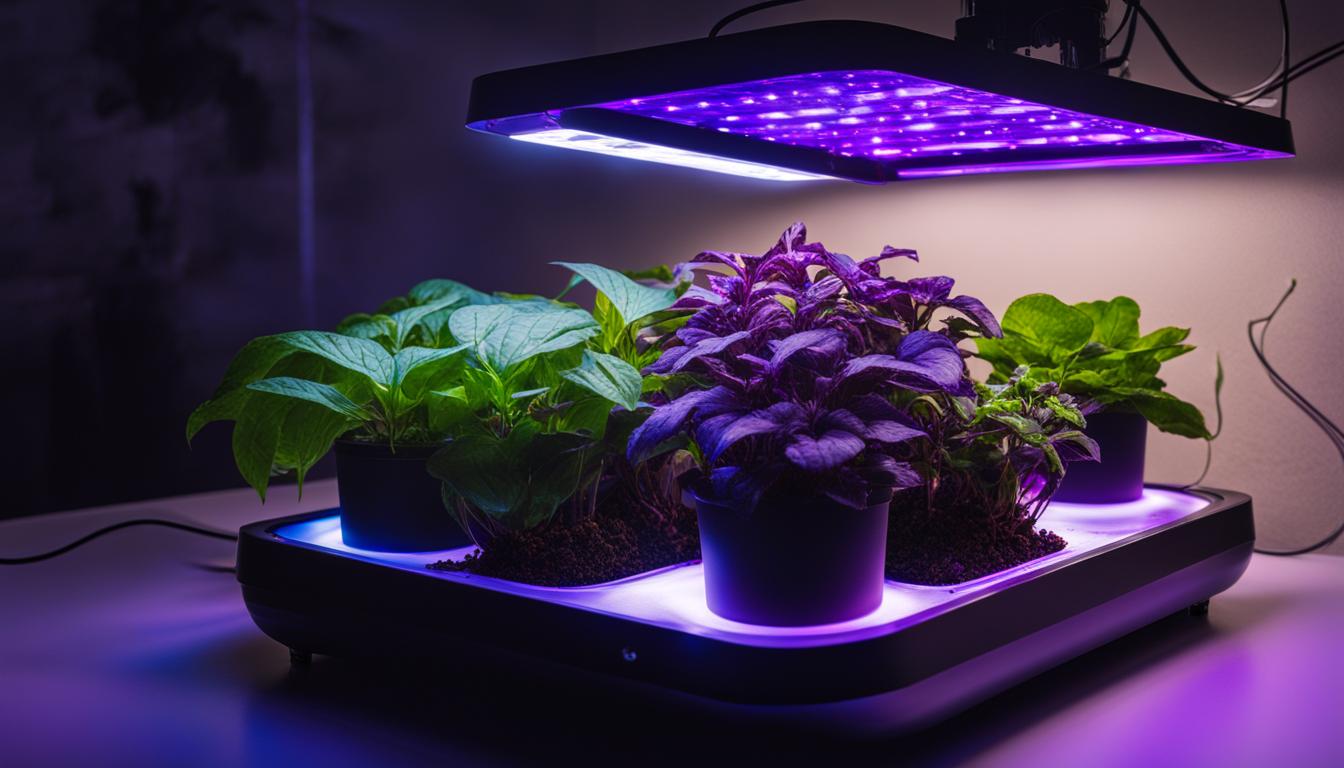
Table: Ideal Nighttime VPD in Hydroponics
| Stage of Growth | Ideal Nighttime VPD Range (kPa) |
|---|---|
| Seedlings and Clones | 0.4 – 0.6 |
| Veg | 0.8 – 1.0 |
| Flower | 0.8 – 1.2 |
The Impact of VPD on Indoor Growing
Indoor growing environments provide growers with the unique opportunity to have complete control over the conditions in which their plants thrive. One critical factor that significantly influences plant growth in these settings is Vapor Pressure Deficit (VPD). VPD is the difference between the amount of moisture in the air and the maximum amount of moisture the air can hold at a given temperature. Understanding how VPD changes with temperature and humidity is crucial for optimizing indoor growing setups.
Temperature and humidity levels directly impact VPD. As the temperature increases, the air can hold more moisture, resulting in a higher VPD. Conversely, lower temperatures lead to a lower VPD. Humidity also plays a role, as higher humidity levels decrease the VPD, while lower humidity levels increase it. By monitoring these factors closely, growers can make adjustments to maintain the ideal VPD range for their plants.
Controlling VPD in indoor growing environments is vital because it directly affects plant transpiration, nutrient uptake, and overall growth. When VPD is too high, plants may experience excessive water loss through transpiration, leading to stress and stunted growth. Conversely, when VPD is too low, plants may struggle to take in nutrients efficiently, resulting in nutrient deficiencies and reduced yields. By understanding and managing VPD, growers can create an optimal environment for their indoor plants to thrive.
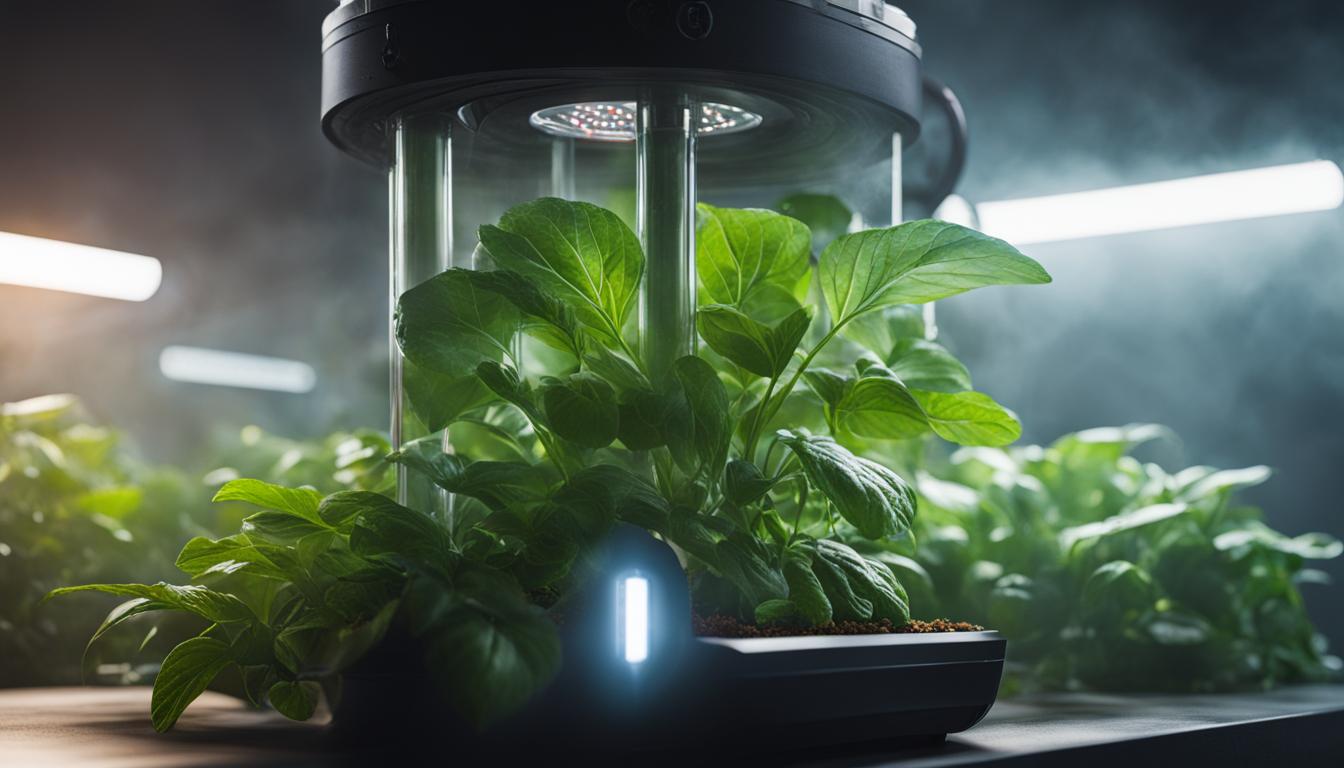
In summary, VPD plays a significant role in indoor growing. Temperature and humidity levels directly influence VPD, and understanding how these changes affect plant growth is crucial for optimizing indoor setups. By closely monitoring and adjusting VPD, growers can provide their plants with the ideal growing conditions, leading to healthier and more productive plants.
Nighttime VPD Strategies in Hydroponics
In hydroponics, the night period presents a unique opportunity for growers to optimize plant growth and ensure the health of their crops. By implementing effective nighttime VPD (Vapor Pressure Deficit) strategies, growers can make the most of this period and achieve optimal results.
Why Nighttime VPD Matters
During the night, plants may not be actively photosynthesizing, but they still undergo respiration and require the right VPD range to maintain their overall health. By maintaining VPD close to daytime levels during the night, growers can create a more stable and consistent environment for their plants.
Different stages of plant growth have varying nighttime VPD requirements. Seedlings and clones, for example, typically benefit from a higher nighttime VPD compared to vegetative and flowering plants. By understanding these specific requirements, growers can fine-tune their hydroponic systems to meet the needs of their crops.
Optimizing Nighttime VPD for Different Stages of Growth
For seedlings and clones, the ideal nighttime VPD range is generally higher, around 0.8-1.0 kPa. This higher VPD helps to promote stronger root development and overall plant growth.
In the vegetative stage, the nighttime VPD should be slightly lower, around 0.6-0.8 kPa. This range allows for balanced growth and encourages the development of healthy foliage.
During the flowering stage, nighttime VPD should be further reduced to around 0.4-0.6 kPa. This lower VPD range helps to promote the formation of buds and optimize flower production.
| Stage of Growth | Ideal Nighttime VPD Range (kPa) |
|---|---|
| Seedlings and Clones | 0.8-1.0 |
| Vegetative | 0.6-0.8 |
| Flowering | 0.4-0.6 |
By adhering to these recommended nighttime VPD ranges, growers can ensure that their plants receive the optimal conditions for growth and development during the night period. This can lead to healthier plants, improved yields, and overall success in hydroponic cultivation.
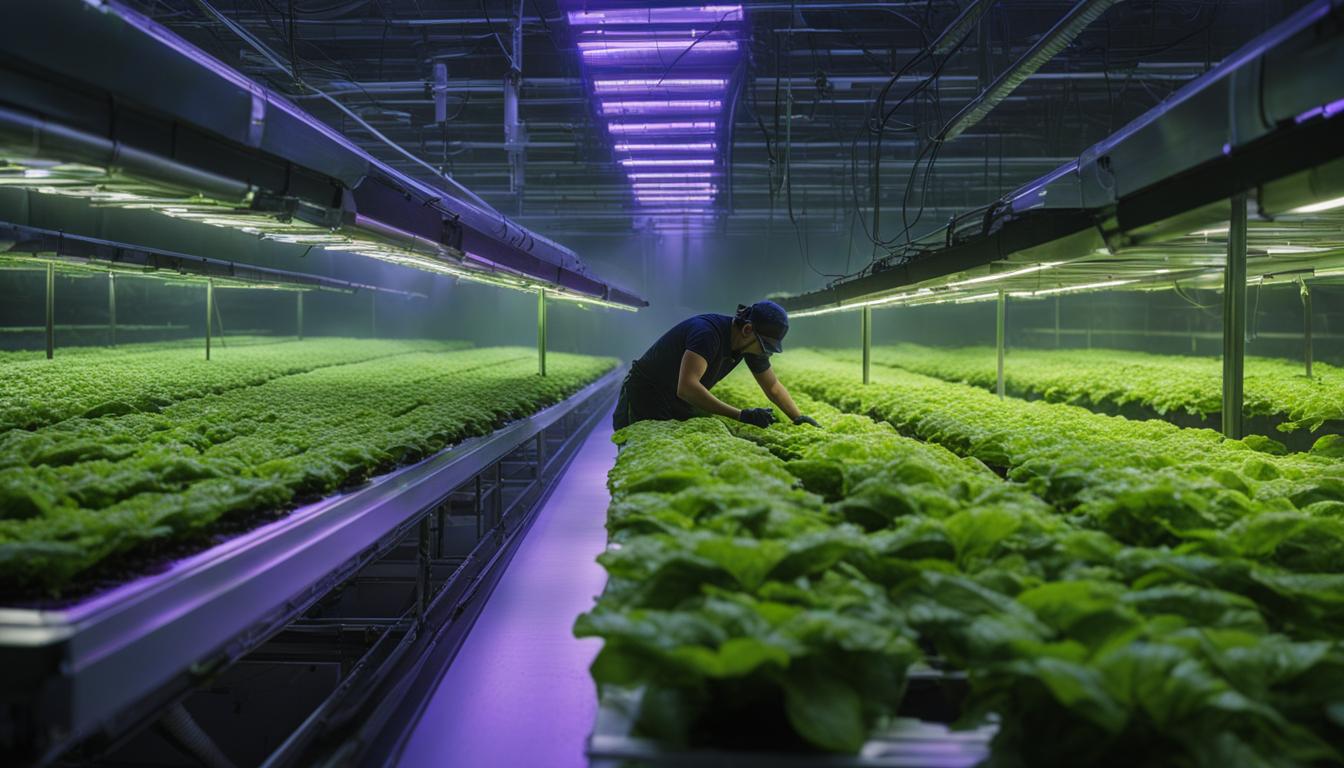
Monitoring VPD at Night
In hydroponics, monitoring VPD at night is crucial for ensuring optimal plant growth. By tracking VPD levels during the nighttime, growers can make necessary adjustments to maintain a favorable environment for their plants.
One effective tool for monitoring VPD at night is the Pulse One VPD sensor. With its advanced technology, the Pulse One sensor provides accurate and real-time data on VPD levels, allowing growers to stay in control of their hydroponic systems.
By using the Pulse One sensor, growers can receive instant alerts if VPD levels deviate from the desired range. This enables them to take immediate action and make necessary adjustments to temperature, humidity, or other environmental factors to ensure optimal VPD throughout the night.
With the ability to monitor VPD at night using tools like the Pulse One sensor, growers can maximize their growth potential and create an ideal environment for their hydroponic plants to thrive.
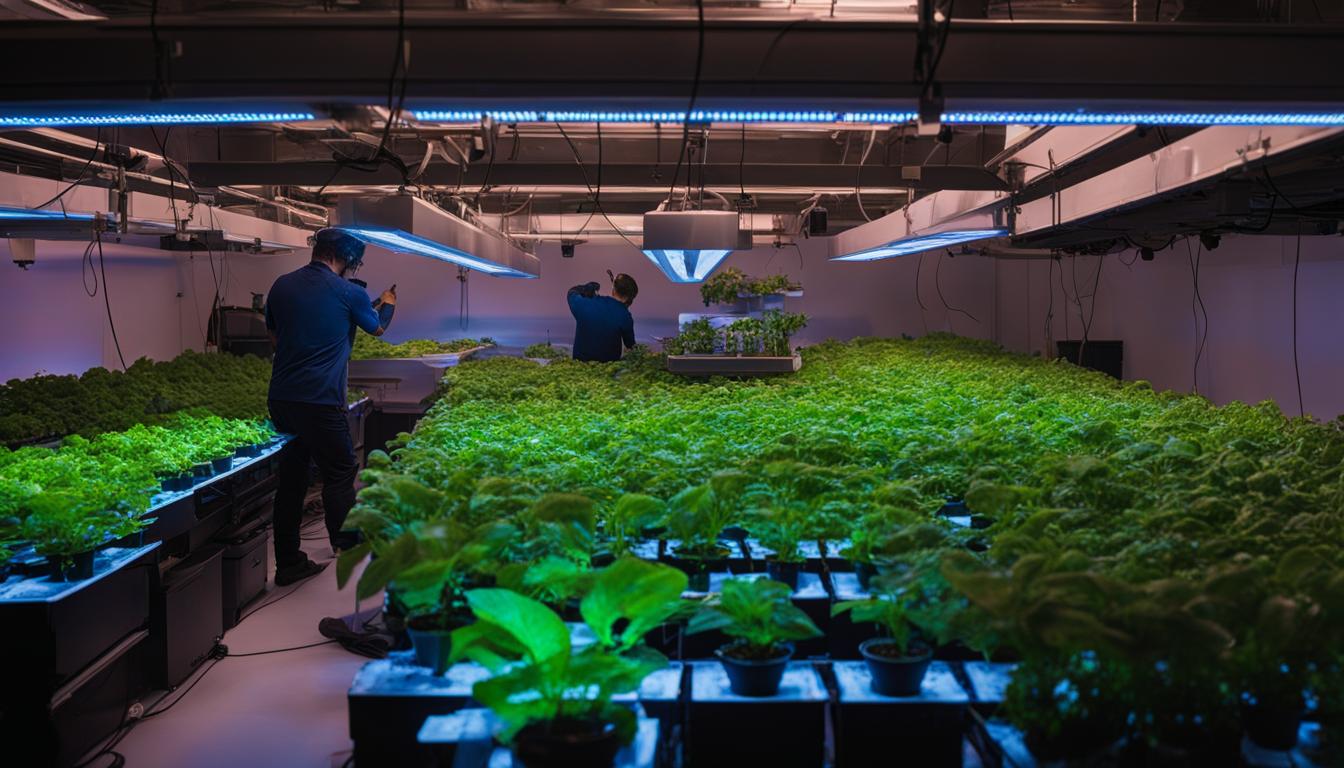
| Benefits of Monitoring VPD at Night |
|---|
| Instant alerts for VPD level deviations |
| Precise and real-time data on VPD levels |
| Ability to make immediate adjustments for optimal VPD |
| Create an ideal environment for plant growth |
VPD in DWC Hydroponics
DWC (Deep Water Culture) hydroponics systems rely on maintaining optimal VPD (Vapor Pressure Deficit) to maximize plant growth and prevent issues like nutrient burn. VPD is the difference between the amount of moisture in the air and the maximum amount the air can hold at a specific temperature. It influences transpiration rates, nutrient uptake, and overall plant health. In DWC systems, controlling VPD is essential for creating the ideal environment for plant growth.
To maintain the optimal VPD in DWC hydroponics, growers need to adjust temperature and humidity levels. If VPD is too low, meaning the air is saturated with moisture, plants may struggle to transpire and take in nutrients effectively. On the other hand, if VPD is too high, plants can experience increased transpiration, leading to nutrient deficiencies and potential stress. Balancing VPD in DWC systems is crucial for ensuring plants grow vigorously and stay healthy.
One important consideration when managing VPD in DWC hydroponics is avoiding excessive humidity levels. High humidity can increase the risk of diseases such as powdery mildew and mold. By maintaining the appropriate VPD range, growers can minimize the risk of these issues and promote healthier plant growth. Regular monitoring of temperature, humidity, and VPD levels is essential to make any necessary adjustments and ensure optimal growing conditions.
| VPD Range | Temperature Range (°F) | Ideal Humidity Range (%) |
|---|---|---|
| Seedlings and Clones | 70-75 | 50-60 |
| Veg | 70-80 | 50-60 |
| Flower | 70-85 | 40-50 |
By referring to the table above, growers can have a general guideline for the ideal VPD range in DWC hydroponics. However, it’s important to note that different plant varieties and strains may have slightly different VPD preferences, so growers may need to make slight adjustments based on their specific crops. Regular monitoring and observation of plant health and growth can help fine-tune VPD levels for optimal results.
Conclusion
VPD, or Vapor Pressure Deficit, is a crucial aspect of hydroponics that directly influences plant growth and productivity. By understanding how to calculate and maintain the optimal VPD range, growers can maximize their growth potential and cultivate healthier, more productive plants. Throughout this article, we have explored the importance of VPD in hydroponics, its impact on different stages of growth, strategies for nighttime VPD optimization, and the significance of monitoring VPD at night.
Optimizing VPD in hydroponics offers several benefits. By maintaining the ideal VPD range, growers can ensure optimal stomata opening, CO2 uptake, transpiration, and nutrient uptake in plants. This helps minimize plant stress and maximizes growth potential. Additionally, considering VPD at night plays a vital role in plant respiration and overall health, even though photosynthesis does not occur during this period.
Indoor growing also heavily relies on VPD management, as growers can control the environment. Understanding how temperature and humidity impact VPD allows growers to fine-tune their setup for optimal growth. Monitoring VPD at night is equally important, and tools like the Pulse One sensor can provide real-time alerts if VPD levels deviate from the desired range, enabling growers to make necessary adjustments.
Whether in DWC hydroponics systems or other methods, VPD remains a crucial factor in achieving maximum growth potential. By optimizing VPD, growers can prevent issues like nutrient burn and ensure healthier, more productive plants. By implementing the knowledge gained from this article, hydroponic growers can take their cultivation to new heights and unlock the full potential of their plants.
